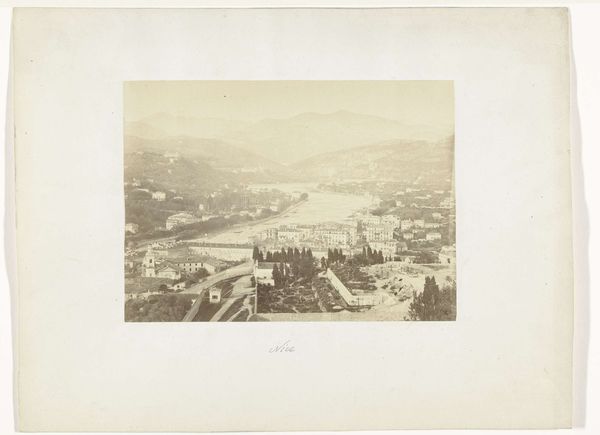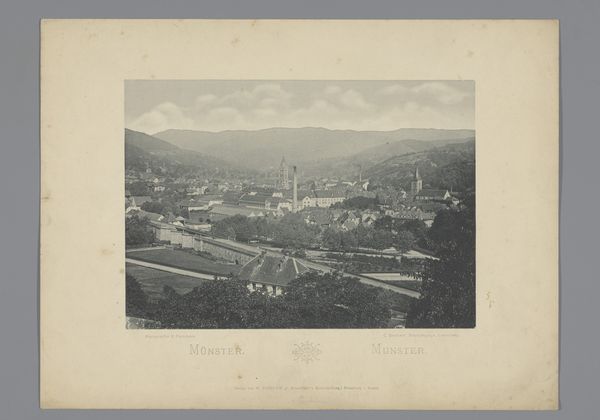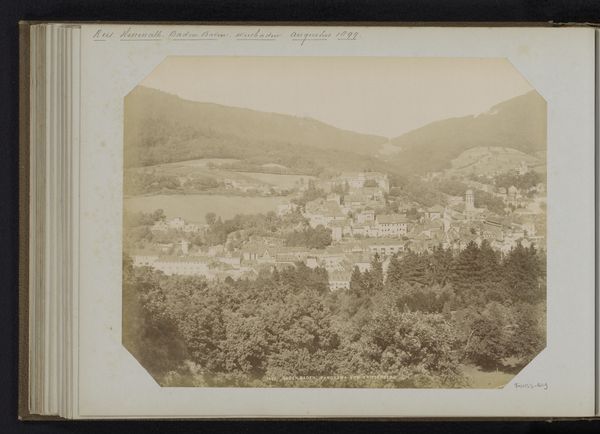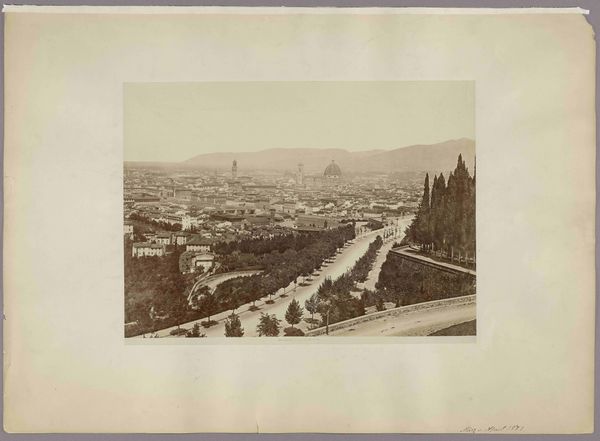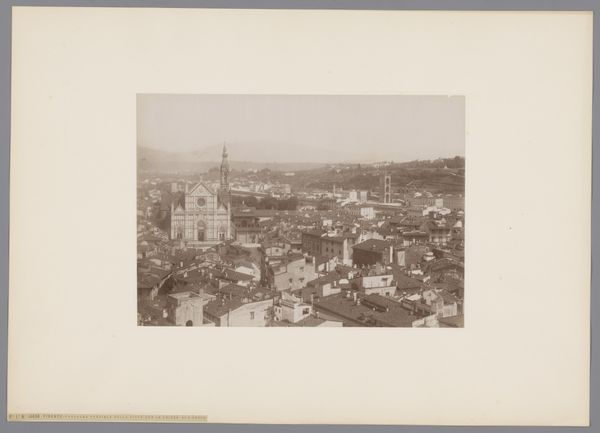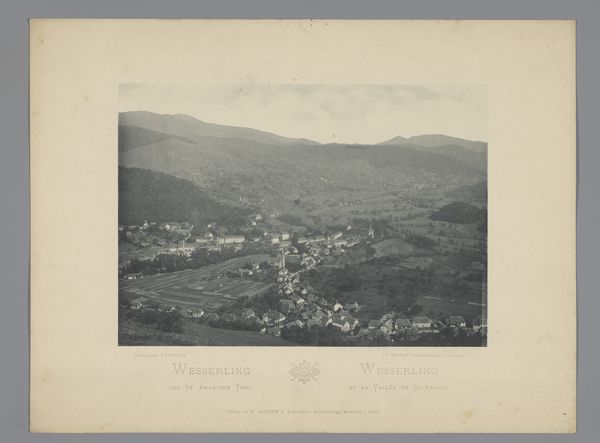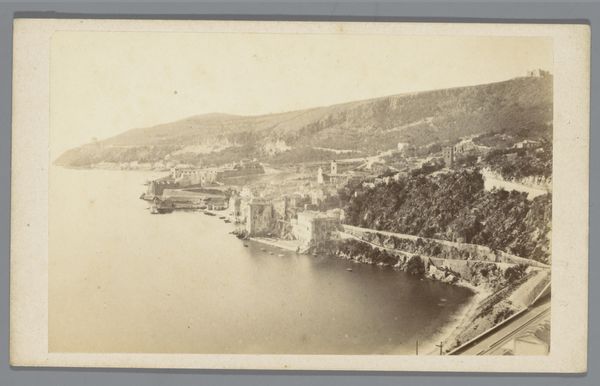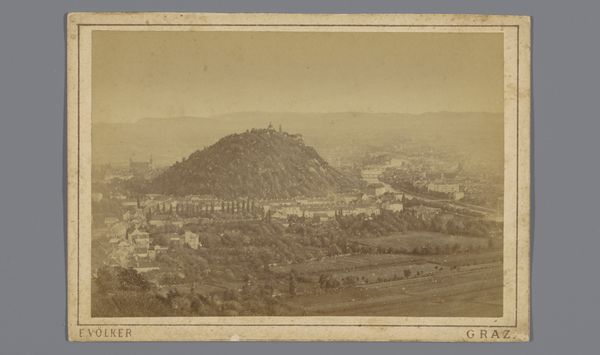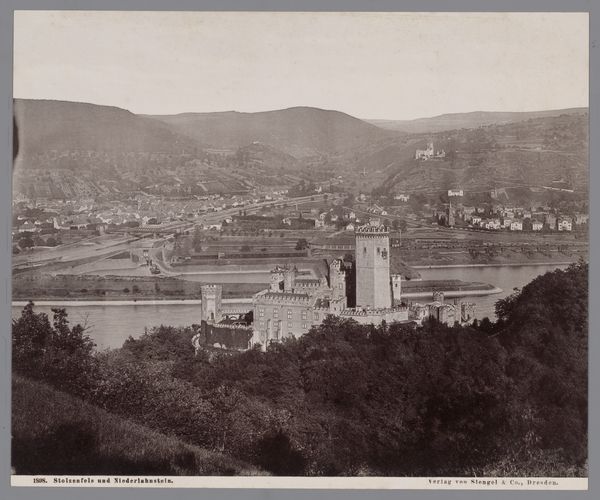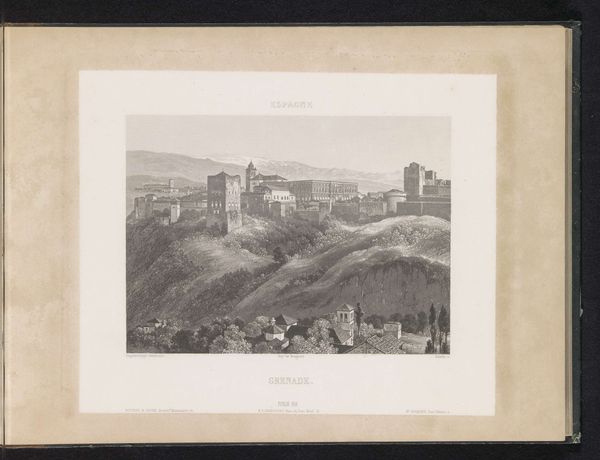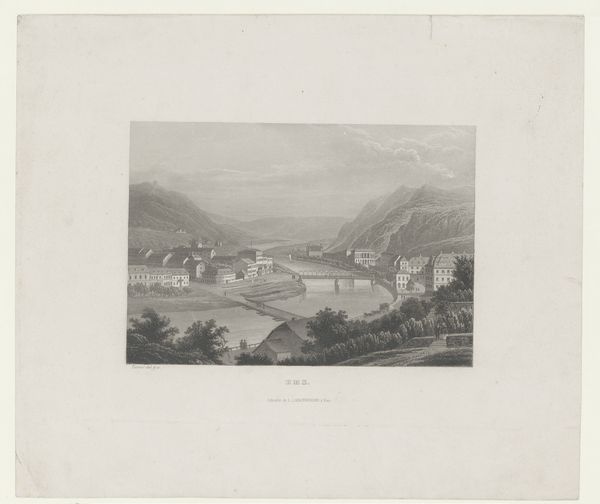
Dimensions: height 137 mm, width 284 mm
Copyright: Rijks Museum: Open Domain
Curator: The first thing that strikes me is this serene, almost sepia-toned stillness. It feels like looking at a dream, a memory fading just slightly around the edges. Editor: That’s a lovely impression. This gelatin-silver print is entitled “View of Salzburg, Austria," and it was captured between 1862 and 1866 by an anonymous photographer, offering a panoramic perspective. Looking at it now, one has to appreciate the historical context. Photography was still a relatively young medium. Cityscapes like this documented urban development while catering to romantic sensibilities through a melancholic visual style. Curator: Melancholy is absolutely the word! It's interesting how a cityscape, which could feel so objective and documentarian, is infused with such a subjective mood. I'm really drawn to the detail; every rooftop, every spire, seems rendered with such care. It reminds me of the detailed miniatures children make of the entire world, yet somehow infused with light. Editor: I'm glad you mentioned that detail! Think about the labor involved: arranging the camera, calibrating exposure times, the post-processing – each step a commitment. Given that early photography wasn't as instantaneous as today, consider that each capture required planning permission and resources – all inherently gendered, raced, and classed. Salzburg, here, transforms from mere scenery into a visual statement about societal norms. Curator: Wow, that completely reframes it for me. Suddenly it’s less of a detached observation and more of a…well, an intentional capture with historical weight. It still retains that wistful romanticism, that desire for…I don’t know, some idealized past? But I now see it’s intertwined with the sociopolitical factors that informed not just what was photographed, but how. It adds an entirely new layer. Editor: Indeed. We must acknowledge that 'romance' is, at times, historical revisionism – where complex narratives are simplified for particular ideological agendas. Reflecting upon historical images such as these enables critical evaluations about what is showcased, but also—critically—what is not shown. Curator: Yes, because ultimately, these captures aren’t accidental—they’re constructions, intentional viewpoints. It’s tempting to fall in love with the pretty view, but we need to consider what frames, literally and figuratively, these impressions. Editor: Precisely. Let us leave our audience with that vital question, prompting reflection long after this audio guide has concluded.
Comments
No comments
Be the first to comment and join the conversation on the ultimate creative platform.
